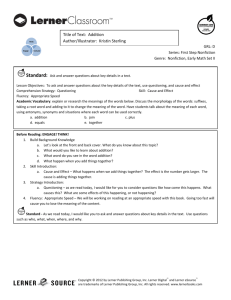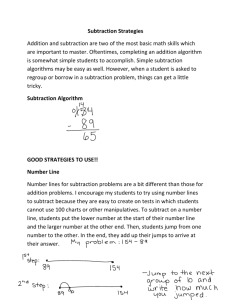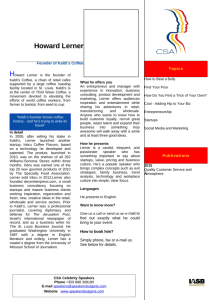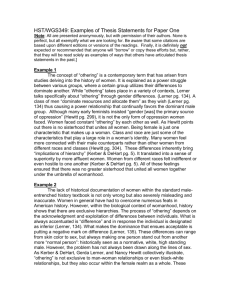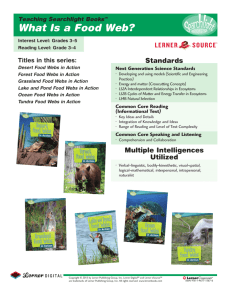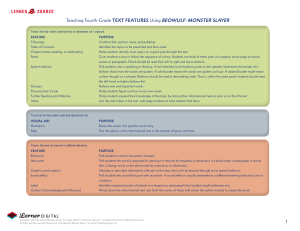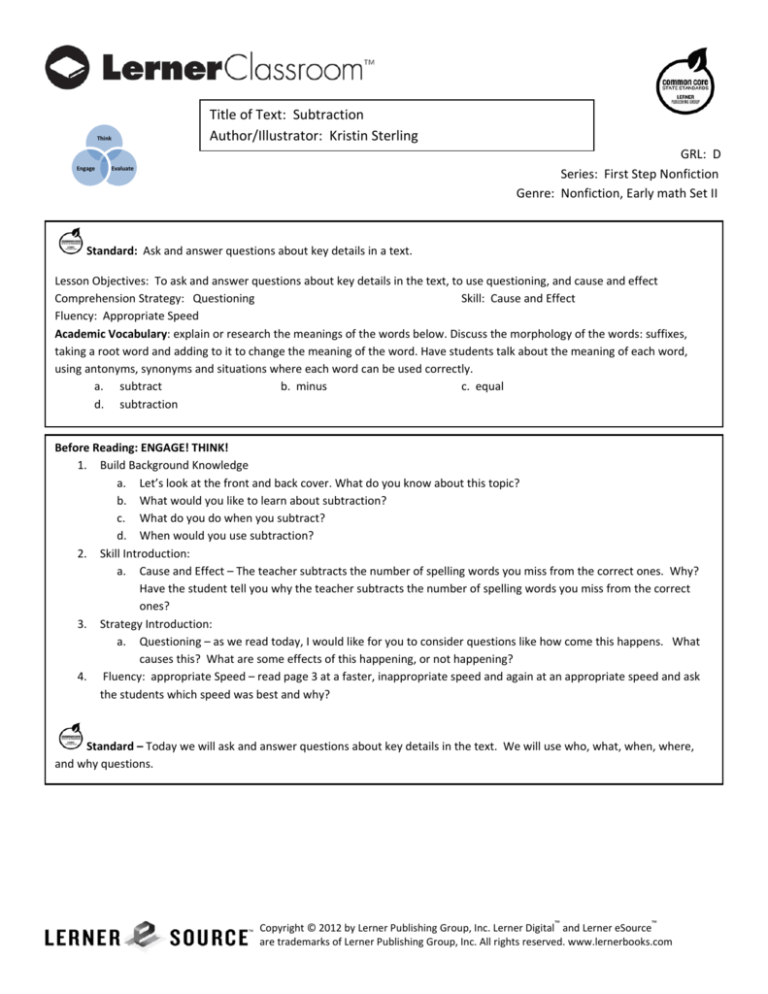
Think
Title of Text: Subtraction
Author/Illustrator: Kristin Sterling GRL: D Series: First Step Nonfiction Genre: Nonfiction, Early math Set II Engage
Evaluate
Standard: Ask and answer questions about key details in a text. Lesson Objectives: To ask and answer questions about key details in the text, to use questioning, and cause and effect Comprehension Strategy: Questioning Skill: Cause and Effect Fluency: Appropriate Speed Academic Vocabulary: explain or research the meanings of the words below. Discuss the morphology of the words: suffixes, taking a root word and adding to it to change the meaning of the word. Have students talk about the meaning of each word, using antonyms, synonyms and situations where each word can be used correctly. a. subtract b. minus c. equal d. subtraction Before Reading: ENGAGE! THINK! 1. Build Background Knowledge a. Let’s look at the front and back cover. What do you know about this topic? b. What would you like to learn about subtraction? c. What do you do when you subtract? d. When would you use subtraction? 2. Skill Introduction: a. Cause and Effect – The teacher subtracts the number of spelling words you miss from the correct ones. Why? Have the student tell you why the teacher subtracts the number of spelling words you miss from the correct ones? 3. Strategy Introduction: a. Questioning – as we read today, I would like for you to consider questions like how come this happens. What causes this? What are some effects of this happening, or not happening? 4. Fluency: appropriate Speed – read page 3 at a faster, inappropriate speed and again at an appropriate speed and ask the students which speed was best and why? Standard – Today we will ask and answer questions about key details in the text. We will use who, what, when, where, and why questions. Copyright © 2012 by Lerner Publishing Group, Inc. Lerner Digital™ and Lerner eSource™ are trademarks of Lerner Publishing Group, Inc. All rights reserved. www.lernerbooks.com During Reading: Don’t Wait Until It’s Too Late! Check for Understanding (Stop Midway through the Book) 1.
2.
3. What does subtract mean? 4.
Tell me about a part you didn’t understand? Turn and Talk: how is using the strategy of questioning helpful in your reading? Standard: What happens when the boy and girl on page 5 eat two cookies? How many cookies did they begin with? How many do they have now? After Reading: EVALUATE! 1. What is the most important thing to remember from this book? What are the details that can help you remember this? 2. What did you learn? 3. What more do you want to learn about subtraction? 4. What happens when you subtract? 5. What is the difference in the word minus and plus? 6.
Standard: When would you use subtraction? 7.
Standard: Cause and Effect ‐ The boy and girl have three cookies on page 6. Why do they just have three? Use page 4 and page 5 to help with your answer? 8. Academic Vocabulary: The words subtract and subtraction, are similar words. What makes them different? When we add the suffix to subtract, how does it change the meaning? What other suffixes can you add to subtract? Writing Standard: Write opinion pieces in which they introduce the topic or name the book they are writing about, state an opinion, supply a reason for the opinion, and provide some sense of closure. Task: Write an opinion piece why you think being able to subtract is helpful to you. List the reasons. When do you need to subtract? How is it helpful? Use the points above to help you. IF/THEN: Cause and Effect – A good way to introduce this concept is by using Curious George books. George was curious about _____________. This got George into trouble because ______________. Copyright © 2012 by Lerner Publishing Group, Inc. Lerner Digital™ and Lerner eSource™ are trademarks of Lerner Publishing Group, Inc. All rights reserved. www.lernerbooks.com


